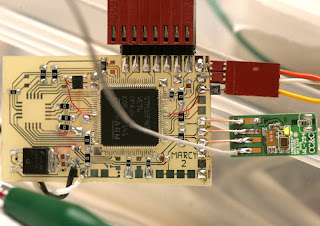
I can't believe just how wrong John Villasenor can be, I guess he figured one of us would mention this here and it would drive his blog posts wild at Scientific American.
He completely misses the real definitions of UAS its not about having an autopilot onboard. What worries me more is that Mr Villasenor is asked to speak about UAS to other grown ups. There is a huge gap between the reality of UAS and what CSI tells us.
John is a member here so he can perhaps chip in and explain his definitions.
From the FAA Interim Guidance http://www.faa.gov/about/office_org/headquarters_offices/ato/service_units/systemops/aaim/organizations/uas/coa/faq/media/uas_guidance08-01.pdf
Unmanned Aircraft: A device used or intended to be used for flight in the air that has no onboard pilot. This includes all classes of airplanes, helicopters, airships, and translational lift aircraft that have no onboard pilot. Unmanned aircraft are understood to include only those aircraft controllable in three axes and therefore, exclude traditional balloons
Here is an excerpt from the Scientific American blog.
What is a "first person view" unmanned aircraft? Is it a drone?
http://blogs.scientificamerican.com/guest-blog/2012/04/12/what-is-a-drone-anyway/#comment-4952
A first-person view (FPV) aircraft has a front-facing video camera and transmits real-time video to an operator on the ground. The operator looks at the image on a computer screen, sees the view as if he or she were sitting in the cockpit, and flies the plane accordingly.
While “UAV” is a general term for (non model aircraft) unmanned aircraft, FPV refers to the subset of such aircraft that are flown by a remote pilot using the image transmitted from an on-board camera. Unmanned aircraft guided exclusively by GPS or on-board computer analysis of imagery are UAVs, but they aren’t first-person view UAVs.
Until now, most FPV aircraft have been operated by the military, using technologies that make it possible to fly the aircraft beyond the line of sight of the pilot. However, use of FPV aircraft in non-military settings is certain to increase with the recent enactment of a new U.S. aviation law that will open U.S. airspace to many types of unmanned aircraft in the coming years. FPV aircraft are likely to be subject to very conservative FAA rules regarding domestic non-line-of-sight operation to minimize potential safety concerns. For example, if the communication link between the pilot and the aircraft fails, then there are obvious challenges involved in bringing the aircraft back to the ground without endangering other aircraft or people on the ground.
Is an FPV aircraft a drone? Under the strictest definition of drone, it isn’t, since it is flown under the control of a human operator. However, when flown beyond the line of sight, an FPV aircraft would be characterized by many people as a drone, despite the significant skill that might be involved in flying it. This is because the definition of drone can be difficult or impossible for an observer to apply. After all, how can someone who sees an unmanned aircraft maneuvering without any evidence of a nearby pilot know whether it is autonomous or remotely piloted? From the observer’s standpoint, it’s not unreasonable to consider it a drone.


































